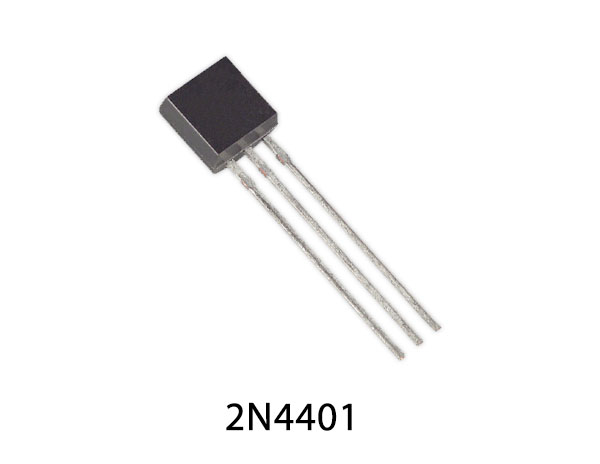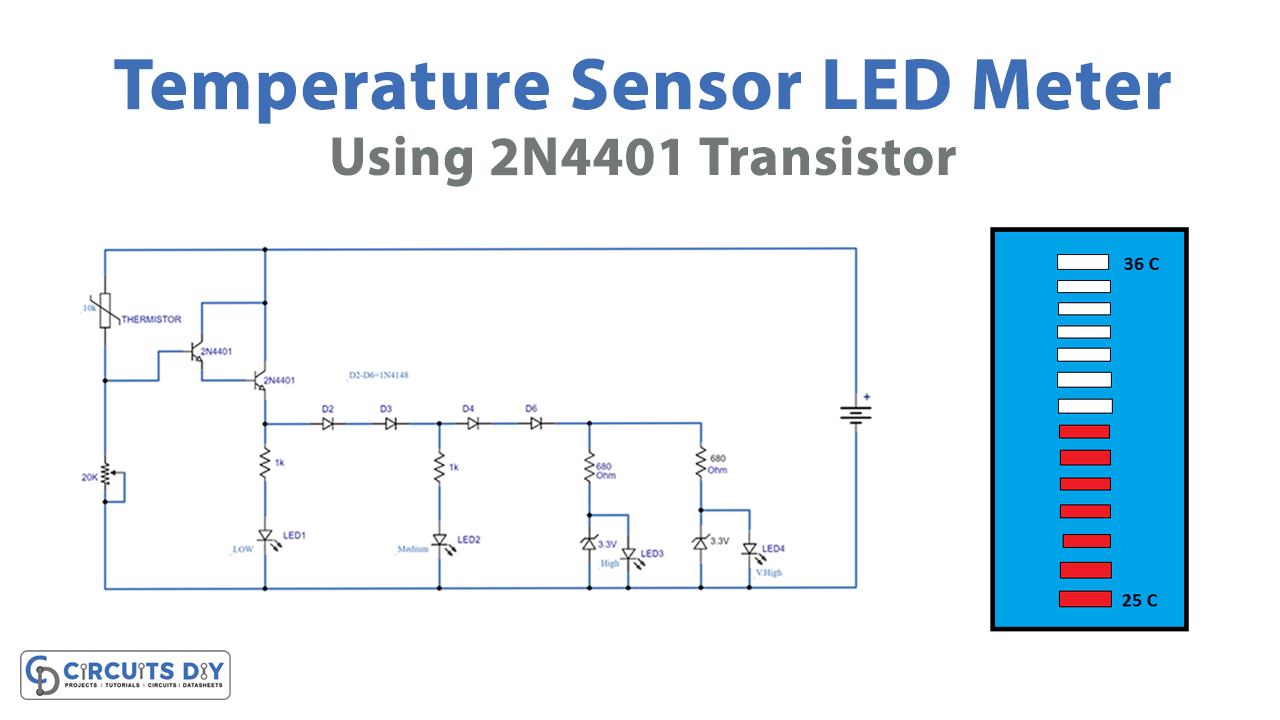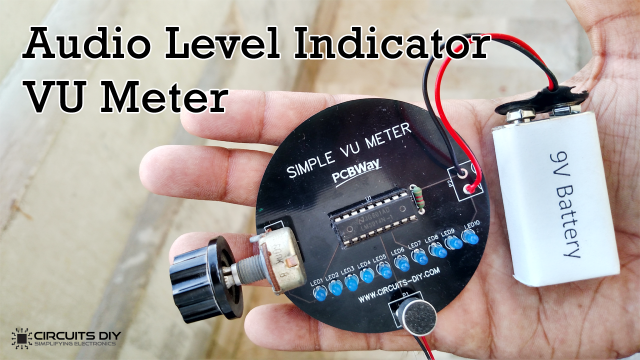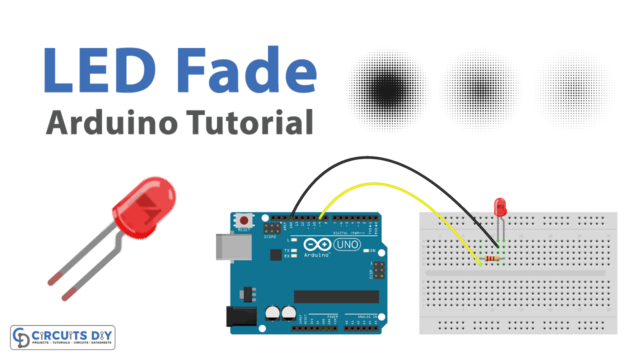In this tutorial, we are making an easy and useful project of a temperature sensor LED meter circuit. This circuit senses high and low-temperature levels and gives a visual indication through LEDs. We have used four LEDs for different levels i.e., low, medium, high, and very high-temperature levels. You can also write the number of Celsius or Fahrenheit with each LED by measuring the LED level with a thermometer.
This circuit is using two transistors that are acting as a switch for this circuit. Other components are thermistors, diodes, resistors, variable resistors, and an input DC supply.

Hardware Components
The following components are required to make Temperature Sensor LED Circuit
| S.no | Component | Value | Quantity |
|---|---|---|---|
| 1. | Variable Resistor | 20K | 1 |
| 2. | Thermistor | 10K | 1 |
| 3. | Transistor | 2N4401 | 2 |
| 4. | Resistor | 1K, 680Ω | 3, 2 |
| 5. | Zener diode | 3.3V | 2 |
| 6. | Diode | 1N4148 | 4 |
| 7. | LED | – | 4 |
| 8. | Battery | 9v | 1 |
2n4401 Pinout

For a detailed description of pinout, dimension features, and specifications download the datasheet of 2n4401
Temperature Sensor LED Circuit

Working Explanation
The operating voltage of this circuit is 9 volts. Initially, the circuit remains off but when the thermistor senses temperature its resistance is decreased and it lets the voltage pass through the circuit. You can adjust the 20K variable resistor to match the circuit with your desired temperature level. Transistors in this circuit are acting as a switch so when the thermistor senses temperature it activates the transistor which then lets the LEDs glow. On the low level LED 1 will glow. When the temperature reaches the medium level LED 2 will glow, similarly on high temperature LED 3 will glow, and finally when the temperature is very high LED 4 will glow. You can also use a 3 volts piezo buzzer instead of LED 4 for the sound indication when the temperature is very high.
For accurate results make sure you use LEDs of the same brand and color because there is a difference between LEDs from different manufacturers so it will not provide equal brightness on the same current which can alter the results.
Applications and Uses
- Heat sensor circuits
- Fire Alarms
- Overheat indicator for different electronic devices














